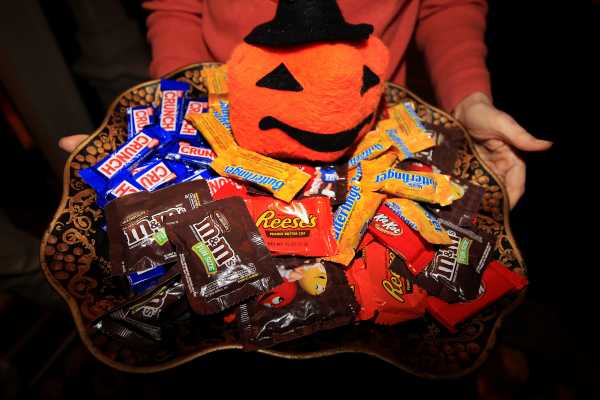
Every Halloween, parents around the country warn their children about something truly scary: poison, pins, and needles in Halloween candy.
It turns out, though, that these concerns are largely unfounded. Researchers who have looked into scares about Halloween candy have found that they’re mostly hoaxes, with no evidence for the vast majority of scares.
As Joel Best, the nation’s top (and perhaps only) researcher on Halloween candy contamination, previously told me, “I’ve done research, and I can’t find any evidence that any child has been killed or seriously hurt by any candy picked up in the course of trick-or-treating. My view is this is overblown. You can’t prove a negative, but it seems unlikely.”
Halloween candy isn’t that scary
Every year around this season, there are frantic warnings about potentially dangerous candy. Parents and schools will tell kids to watch out for candy in tampered packaging, with some parents even insisting on checking all their kids’ candy before it’s eaten. In recent years, we’ve also seen (unfounded) concerns about marijuana-laced candy as more states have legalized pot.
The fears are pretty new, as the concept of trick-or-treating is also fairly new in the US. Trick-or-treating largely began as a phenomenon after World War II to, in Best’s telling, counter the shenanigans that older adolescents were involved in around Halloween, such as covering houses in toilet paper and tipping over outhouses. Communities figured that if they embraced Halloween and turned it into a mainstream holiday that children could participate in, the pranks — or at least some or most of them — would go away.
As the idea spread and more communities participated, fears of dangerous candy and other hazards also began to pop up fairly quickly.
“The older versions of this that I know of were stories in the early 1950s about people heating pennies on skillets and then dumping the hot pennies in the outstretched hands of trick-or-treaters,” Best said. “This morphed by the 1960s into poison and pins in candy bars.”
But there’s no evidence for the poisoned candy scares. In a study published in 1993, Best looked for credible reports of poisoned Halloween candy, finding no plausible cases up to that point. Since then, he has continued to scour for feasible reports but, again, has found no credible cases.
The closest thing to a case like the ones so many parents worry about comes from 1974. Back then, an 8-year-old died after eating Pixy Stix laced with cyanide. But the culprit wasn’t a stranger handing out candy to trick-or-treaters; it was the child’s father, who apparently did it to get life insurance money.
As for scares about sharp objects (like pins, needles, and razors) in candy, Best has found 100 reports of this happening since 1958. That amounts to fewer than two cases a year in a country of hundreds of millions of people. But even that tally may be inflated; according to Best, studies that followed up on such reports found that the vast majority — 95 percent or more — were hoaxes.
And unlike poison (which would carry the real threat of death), injuries from sharp objects in candy are relatively minor. The worst case Best found resulted in around a dozen stitches, but nothing more.
So why do these concerns stick around? Best gave me a theory: “We live in a world of apocalyptic scenarios. Here we are; we have safer, healthier, longer lives than people in any other point in history. And we are constantly imagining that this could all fall apart in a nanosecond.” He added, “So I think that what happens is we translate a lot of our anxiety into fears about our children.”
Sourse: vox.com






